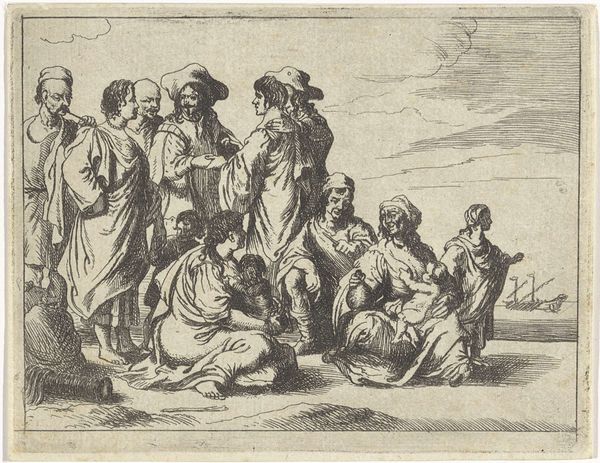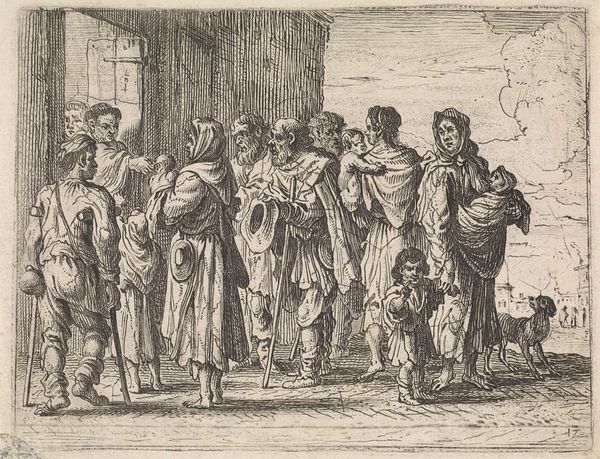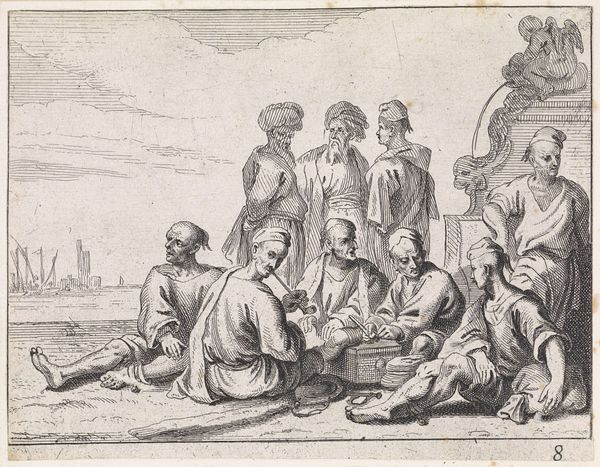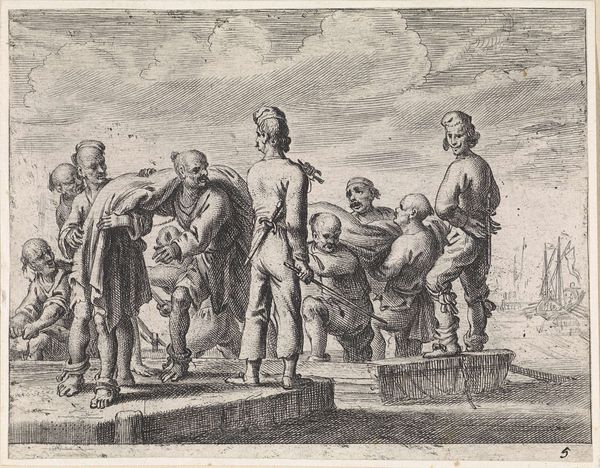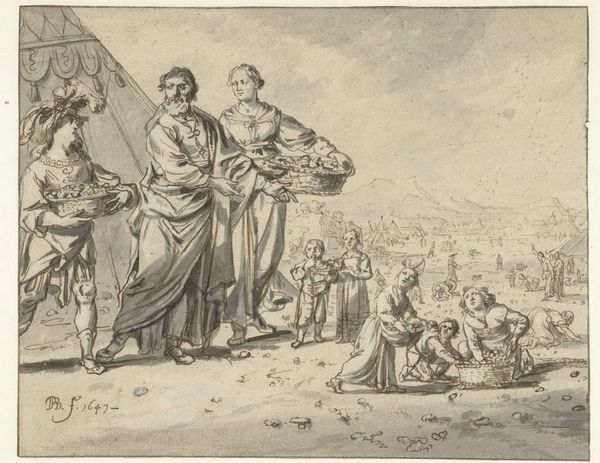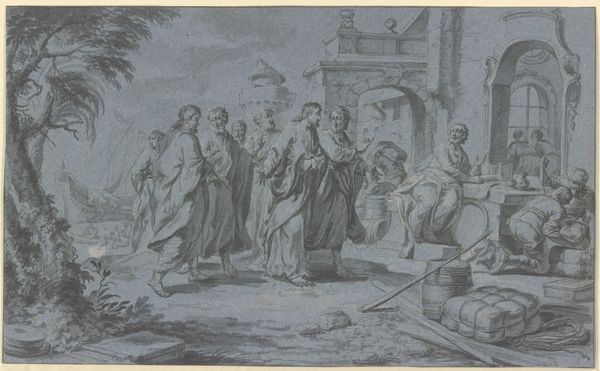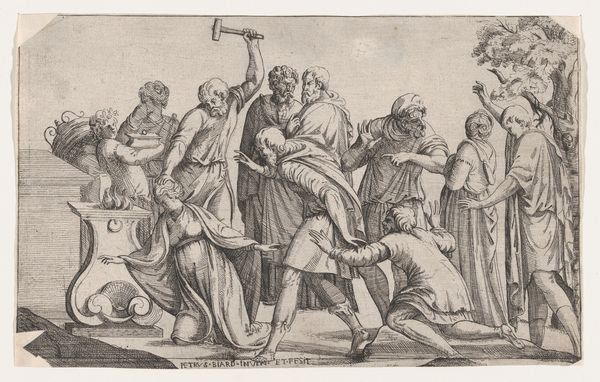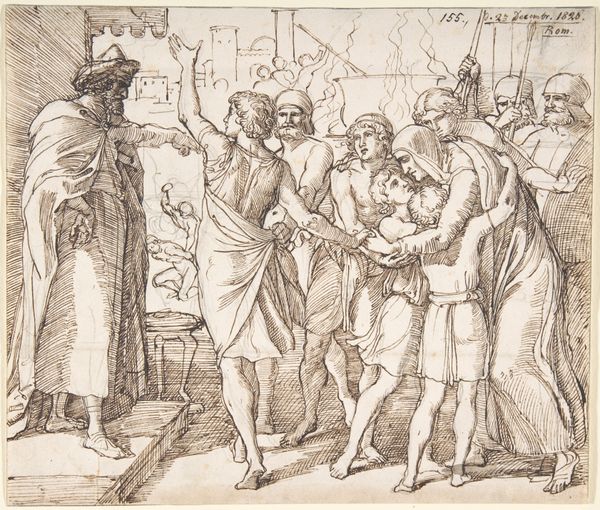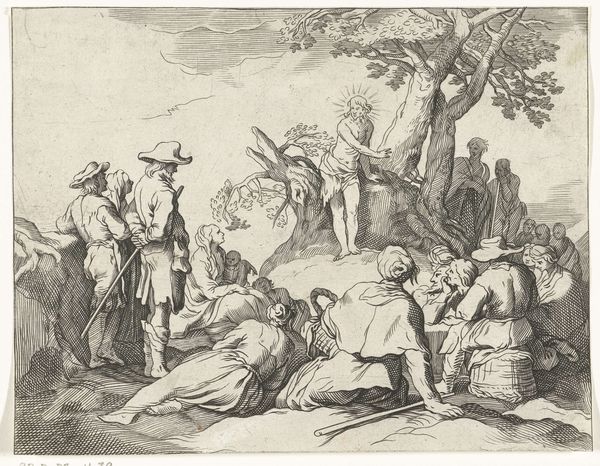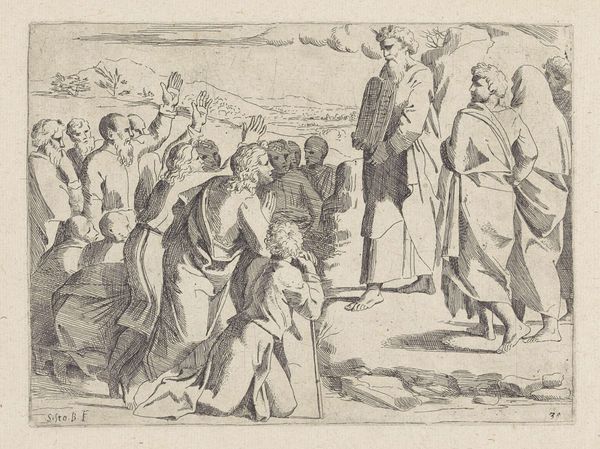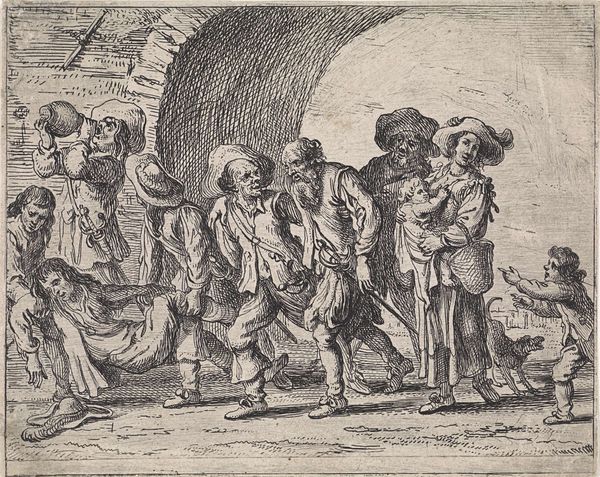
print, etching
#
narrative-art
#
baroque
#
dutch-golden-age
# print
#
etching
#
figuration
#
genre-painting
Dimensions: height 113 mm, width 145 mm
Copyright: Rijks Museum: Open Domain
Curator: The etching before us, created around 1647, is titled "Islamitische galeislaven krijgen eten", which translates to "Islamic galley slaves receiving food," by Cornelis de Wael. It offers us a glimpse into a very particular intersection of cultures and power dynamics. Editor: The immediate impression is quite stark, a somber scene despite the everyday act of eating. The contrast between the men being fed and the men overseeing them highlights a palpable tension. Curator: Absolutely. Consider the socio-political backdrop. The 17th century was a period rife with maritime conflict, and these galley slaves, likely captured during naval battles, represent the spoils of war. We have to acknowledge how this imagery reinforces existing hierarchies. Editor: The clothing clearly differentiates the groups, but so does the gaze. Look how the supposed 'captors' are set to the side, fully upright. Their fashionable attire serves as a potent reminder of dominance and control. The imagery almost speaks to the power and social implications. Curator: I agree. The etching serves as a potent reminder of the human cost of colonialism and naval expansion during that era, which relied on enslavement, predominantly of muslim people. It forces us to confront the dark realities often glossed over in more celebratory accounts of Dutch Golden Age. It makes you think about labor, race and cultural status. Editor: I wonder too about the significance of communal eating depicted here, a practice often imbued with religious and social meanings across various cultures, even for galley slaves, sharing a daily necessity is portrayed in such dire conditions of slavery. The simple act could carry weight. Curator: Indeed, thinking of shared meals this way helps to remember that there is always an element of shared humanity no matter the oppressive system we find, or place, ourselves within. The etching makes these connections, both contrasting social realities, and hinting at the connections between disparate peoples. Editor: Seeing how food acts a potent signifier of everything from social position to religious practice opens avenues for understanding the broader implications of representation within the historical narrative. Curator: By analyzing the visual rhetoric and contextualizing the artwork within its historical and social context, we can extract powerful insights into cultural exchange, conflict, and the enduring legacy of this dark chapter in human history. Editor: Thinking about its cultural baggage helps me look past my initial discomfort to consider a wider symbolic relevance and begin to see its cultural weight.
Comments
No comments
Be the first to comment and join the conversation on the ultimate creative platform.
